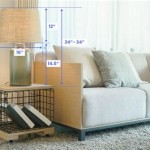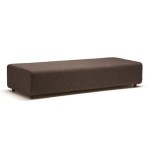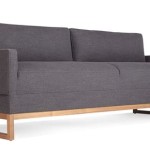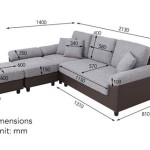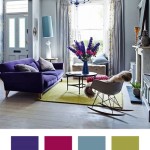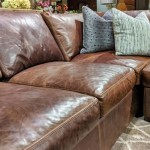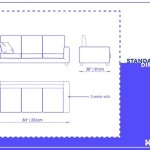Curved Garden Sofa: A Comprehensive Guide to Style and Comfort
Curved garden sofas represent a significant departure from traditional straight-lined outdoor furniture, offering a blend of aesthetic appeal and enhanced social interaction. Their unique design encourages conversation and creates a more intimate seating environment. This article delves into the various aspects of curved garden sofas, including their benefits, materials, design considerations, maintenance, and placement within outdoor spaces.
Benefits of Choosing a Curved Garden Sofa
The primary advantage of a curved garden sofa lies in its ability to foster a sense of community and connection. Unlike linear sofas that direct attention forward, the curved shape promotes face-to-face interaction, making it ideal for social gatherings. This design naturally encourages conversation and creates a more inclusive atmosphere.
Beyond its social benefits, the curved design can also optimize space utilization, particularly in irregularly shaped gardens or patios. The curved form can seamlessly integrate into existing landscaping features, such as curved pathways or planting beds, creating a more cohesive and visually appealing outdoor space. Furthermore, a curved sofa can soften the hard lines often associated with outdoor architecture, adding a touch of elegance and sophistication.
From a purely aesthetic perspective, a curved sofa can serve as a focal point in the garden, drawing the eye and adding visual interest. Its unique form distinguishes it from more conventional outdoor furniture options, making it a statement piece that reflects individual style and design sensibility. The curvature itself can be visually appealing, offering a softer, more organic silhouette compared to the rigid lines of traditional sofas.
Materials and Construction Considerations
The longevity and comfort of a curved garden sofa are heavily dependent on the materials used in its construction. The frame material, in particular, plays a crucial role in the sofa's durability and resistance to weather conditions. Common frame materials include aluminum, steel, wicker, and wood.
Aluminum frames are lightweight, rust-resistant, and require minimal maintenance, making them a popular choice for outdoor furniture. Steel frames offer superior strength and stability but are susceptible to rust if not properly treated with a protective coating. Wicker, both natural and synthetic, provides a classic and stylish aesthetic. Natural wicker requires regular maintenance to prevent damage from moisture and sunlight, while synthetic wicker is more durable and weather-resistant. Wood frames, such as teak or acacia, offer natural beauty and durability. Teak is particularly prized for its resistance to decay and insect infestation, while acacia offers a more affordable alternative. However, wooden frames require periodic treatment with oil or sealant to maintain their appearance and prevent cracking.
The cushioning is equally important for comfort and longevity. Outdoor cushions should be made from weather-resistant materials, such as solution-dyed acrylic fabric or olefin. These fabrics are resistant to fading, mildew, and water damage. The filling material should also be designed for outdoor use, such as quick-drying foam or polyester fiberfill. These materials allow water to drain quickly, preventing the growth of mold and mildew. The quality of the stitching and seams also contributes to the overall durability of the cushions. Look for cushions with reinforced seams and durable zippers.
Design and Style Integration
Curved garden sofas are available in a wide range of styles, from modern and minimalist to traditional and ornate. The design should complement the overall aesthetic of the garden and reflect individual preferences. Factors to consider include the color of the frame and cushions, the style of the armrests and backrests, and the presence of any decorative elements.
For a contemporary garden, a curved sofa with clean lines and a minimalist design may be appropriate. Neutral colors such as gray, white, or black often work well in modern settings. Cushions with simple geometric patterns or solid colors can enhance the clean aesthetic. Conversely, a traditional garden may benefit from a curved sofa with a more ornate design. Wicker frames with intricate details or wooden frames with carved accents can add a touch of elegance and sophistication. Cushions with floral patterns or textured fabrics can further enhance the traditional appeal.
Integrating the curved sofa into the existing landscape requires careful consideration of the surrounding elements. The sofa should be placed in a location that maximizes comfort and enjoyment of the garden. Consider factors such as sunlight exposure, wind direction, and privacy. A curved sofa placed in a sunny location may require the addition of an umbrella or awning to provide shade. A sofa placed in a windy area may benefit from the addition of windbreaks, such as hedges or screens. Privacy can be enhanced by placing the sofa near landscaping features or using outdoor curtains or screens.
The surrounding accessories also play a crucial role in creating a cohesive and inviting outdoor space. Outdoor rugs can define the seating area and add warmth and texture. Throw pillows can provide additional comfort and visual interest. Coffee tables and side tables can provide convenient surfaces for drinks, snacks, and books. Outdoor lighting can create a warm and inviting ambiance in the evening. Plants can add color and texture to the surrounding landscape and enhance the feeling of privacy and tranquility. The selection of accessories should be carefully considered to complement the style of the curved sofa and the overall aesthetic of the garden.
When choosing a curved garden sofa, it is important to consider its size and scale in relation to the surrounding space. A sofa that is too large can overwhelm a small garden, while a sofa that is too small can look insignificant in a large garden. Measure the available space carefully before making a purchase and consider the overall proportions of the sofa in relation to the surrounding landscape. It is also important to consider the number of people who will typically be using the sofa. A larger sofa may be appropriate for a family with children or for frequent entertaining, while a smaller sofa may be sufficient for a couple or individual.
Maintenance and Care
Proper maintenance is essential to prolong the life and appearance of a curved garden sofa. Regular cleaning and protection from the elements are crucial for preventing damage and maintaining the sofa's aesthetic appeal.
The frequency of cleaning will depend on the environment and the materials used in the sofa's construction. Generally, it is recommended to clean the sofa at least once a month, or more frequently if it is exposed to heavy rain, dirt, or pollen. The cleaning process will vary depending on the materials. Aluminum and steel frames can be cleaned with a mild soap and water solution. Wicker frames can be cleaned with a soft brush and a mild detergent. Wooden frames can be cleaned with a damp cloth and a wood cleaner or oil. Cushions should be cleaned according to the manufacturer's instructions. Most outdoor cushions can be spot-cleaned with a mild soap and water solution. Some cushions can be machine-washed, but it is important to check the care label before doing so.
In addition to regular cleaning, it is important to protect the sofa from the elements. Covering the sofa when it is not in use can prevent damage from rain, sun, and wind. Outdoor furniture covers are available in a variety of materials and sizes. It is important to choose a cover that is breathable and waterproof to prevent the build-up of moisture and mildew. During the off-season, it is recommended to store the sofa indoors or in a covered area. This will protect it from the harsh winter weather and prolong its lifespan.
Regular inspection of the sofa is also important for identifying and addressing any potential problems. Check for loose screws, cracks in the frame, or tears in the cushions. Addressing these issues promptly can prevent them from becoming more serious and costly to repair. Tighten loose screws, repair cracks in the frame, and replace damaged cushions as needed. By following these maintenance tips, you can ensure that your curved garden sofa provides years of enjoyment and enhances the beauty of your outdoor space.
Investing in high-quality materials and employing consistent maintenance practices will contribute significantly to the longevity and aesthetic appeal of the curved garden sofa, ensuring a comfortable and stylish outdoor seating solution for years to come.

Luxury Outdoor Curved Rattan Sofa Set Designer Tulip Interiors

4 Piece Mayfair Curved Modular Garden Furniture Set Rattan Bridgman

Nova Kensington Curved Corner Sofa Set 3a Grey

Cambridge Curved Sofa Dining Set Daybed With Polywood Rising Table Top

9 Piece Mayfair Curved Modular Garden Furniture Set Rattan Bridgman

Half Moon Sofa Sets Curved Round Garden Furniture

Skyline Design Strips Modular Curved Rattan Garden Sofa Posh Furniture

Bridgman All Seasons 4 Piece Kensington Kingston Curved Modular Sofa Set B Birstall

Nova Kensington Curved Corner Sofa Set Grey Flowerland Home And Garden Iver Bourne End Buckinghamshire

Bridgman All Seasons 7 Piece Kensington Kingston Curved Modular Sofa Set E Birstall

